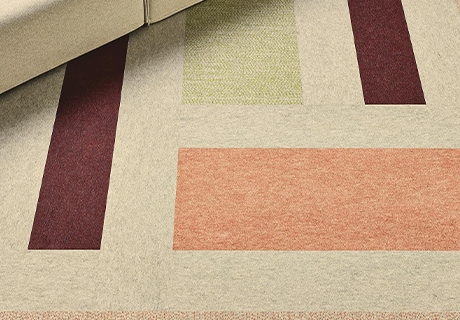Using Artwork To Alleviate Patient Anxiety
Positive distractions in hospitals, including playrooms, indoor gardens, and art installations, can help improve the patient experience and promote healing by helping to alleviate worrisome thoughts and focus.
But with hospital budgets stretched thin by lower reimbursement rates and rising labor, equipment, and supply costs, these solutions could easily be deemed as “nice to haves” rather than “need to haves.”
Fortunately, it doesn’t have to be a choice. Here are some ways hospitals are creating positive distractions to ensure engaged communities, happier patients, and better outcomes.
Using artwork to connect to the community
Hospitals are expected to remain under intense financial pressure for the foreseeable future. This means funding for new construction will likely prioritize revenue-generating spaces, such as diagnostics, procedures, and inpatient stays.
Rather than undertaking costly additions or expansions to accommodate things like TV screening rooms or atriums, hospitals should look to ceilings, floors, walls, corridors, and elevator bays that can be transformed into meaningful positive distractions. But instead of adorning this underused real estate with generic art, hospitals can use interactive art installations and experiences to create welcoming experiences that offer comfort and community connection.
One example is the Odessa Brown Children’s Clinic in Seattle. As the new clinic was being designed, community members expressed that they didn’t want the space to feel clinical. They also stressed the idea of “no blank walls.” In response, the design team wrapped the space in murals by local Black and indigenous artists that honor the clinic’s legacy and celebrate its cultural heritage.
Another project utilized the flooring to make an impact as well as connect with the community. In the waiting area of Chief Andrew Isaac Health Center in Fairbanks, Alaska, the flooring is inlaid with a 30-foot diameter circular calendar.
The calendar showcases seasonal events, including planting, hunting, and fishing, as well as traditional celestial milestones, such as the solstices. It’s designed to allow parents to teach children about their culture, while allowing young patients to think about something different than their medical condition.
Interactive displays for waiting rooms and corridors
New technologies, such as high-quality LED screens, motion sensors, and artificial intelligence, are creating opportunities for positive distractions. Examples include interactive art installations, displays, and surfaces.
At a waiting area at an academic medical center in Southern California, children and teens will soon be able to use a touchscreen to create customized animals, including baby bears, rabbits, and deer. These animals are then “released” into a virtual forest where patients can follow their activity.
Motion sensors will detect a child’s movement, prompting actions in the virtual forest, such as fish jumping in a stream or butterflies gathering around the patient.
Healthcare facilities can also use interactive displays and digital media to turn overlooked areas into experiences that evoke natural surroundings, which can help reduce stress and improve well-being.
For example, at Great Ormond Street Hospital for Children in London, interactive digital wallpaper transforms the hallways outside operating rooms into an enchanting forest nature trail. Patients can touch the wall to reveal animated woodland creatures such as deer, hedgehogs, and birds.
Employing technology as positive distractions
With technology rapidly evolving, the possibilities for creating new types of positive distractions are endless. Using an app at home, patients take a photo of something they cherish and upload it to an ever-changing digital mural in the hospital. There, they can see their contributions publicly displayed to create a sense of connection and comfort.
Another options is for a patient to touch the art and leave a mark on it that persists after they leave. This can also help build a sense of community, rather than isolation, in the hospital.
Unlike traditional murals, which can become monotonous after frequent viewing, evolving artwork can be a constant source of surprise and inspiration. This feature is especially important to patients in physical rehabilitation who sometimes need incentives to keep moving.
Embedding digital elements that can be discovered by a visitor over time, aka “Easter Eggs,” within a care environment can offer moments of surprise or daily puzzles that can be solved. In turn, these features create a sense of discovery that can go a long way in buoying feelings, incentivizing movement, and speeding recovery.
Benefits of supporting staff
Studies show that patients also benefit when caregivers can access experiences that enhance their positive well-being. Often times, it’s impossible for staff to leave their unit to walk in an indoor garden or go outside to decompress. Weaving positive distractions into spaces closer to staff ensure they can benefit from artwork as well.
By capitalizing on these technologies and collaborating with innovative designers and artists, hospitals can integrate positive distractions into every part of the patient experience. This will help immerse patients in a care environment that promotes healing from start to finish.
Katie Barnard is the head of content strategy at ESI Design, NBBJ’s New York experience design studio. She can be reached at kbarnard@esidesign.com. Eric LeVine is creative director and principal-in-charge of NBBJ’s Seattle Environmental Graphic Design studio. He can be reached at ELevine@nbbj.com. Jessica Radecki, AIA, is a healthcare director at NBBJ (Portland). She can be reached at JRadecki@nbbj.com. Emily Webster is a studio design leader at ESI Design. She can be reached at ewebster@esidesign.com.







